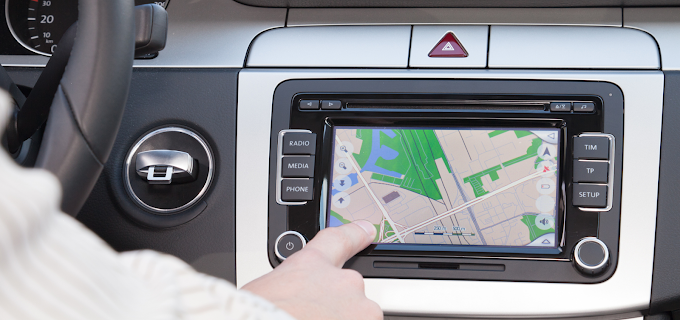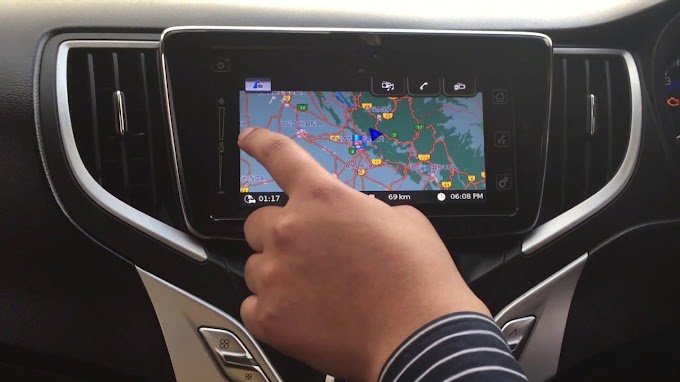What is GPS?
GPS or Global Positioning System is a satellite route framework that outfits area and time data in all environment conditions to the client. TomTom GPS is utilized for route in planes, boats, vehicles, and trucks too. The framework gives basic capacities to military and regular citizen clients around the planet. GPS gives constant continuous, 3-dimensional situating, route and timing around the world.
How does GPS System Work?
The GPS comprises of three portions:
- The space portion: the GPS satellites
- The control framework, worked by the U.S. military,
- The client portion, which incorporates both military and regular citizen clients and their GPS gear.
Space Segment:
The space portion is the quantity of satellites in the group of stars. It involves 29 satellites orbiting the earth like clockwork at 12,000 miles in height. The capacity of the space fragment is used to course/route signals and to store and retransmit the course/route message sent by the control section. These transmissions are constrained by exceptionally stable nuclear timekeepers on the satellites. The GPS Space Segment is framed by a satellite group of stars with enough satellites to guarantee that the clients will have, in any event, 4 synchronous satellites in view from any point at the Earth's surface whenever.
Control Segment:
The control portion contains an expert control station and five screen stations furnished with nuclear timekeepers that are spread around the world. The five screen stations screen the GPS satellite signals and afterward send that certified data to the expert control station where variations from the norm are updated and sent back to the GPS satellites through ground reception apparatuses. The control section additionally alluded to as a screen station.
User Segment:
The client portion contains the GPS beneficiary, which gets the signs from the GPS satellites and decides the distance away it is from each satellite. Essentially this portion is utilized for the U.S military, rocket direction frameworks, regular citizen applications for GPS in pretty much every field. The majority of the regular citizen utilize this from study to transportation to normal assets and from that point to agribusiness reason and planning as well.
How GPS Determines a Position:
The working/activity of the Global situating framework depends on the 'trilateration' numerical standard. The position is resolved from the distance estimations to satellites. From the figure, the four satellites are utilized to decide the situation of the recipient on the earth. The objective area is affirmed by the fourth satellite. Furthermore, three satellites are utilized to follow the area place. A fourth satellite is utilized to affirm the objective area of every one of those space vehicles. The worldwide situating framework comprises of satellite, control station and screen station and recipient. The GPS beneficiary takes the data from the satellite and uses the strategy for triangulation to decide a client's accurate position.
Click Here To Get Details About TomTom Auto GPS Navigation
GPS is used on some incidents in several ways, such as:
- To decide position areas; for instance, you need to radio a helicopter pilot the directions of your position area so the pilot can get you.
- To explore starting with one area then onto the next; for instance, you need to head out from a post to the fire edge.
- To make digitized maps; for instance, you are allocated to plot the fire border and problem areas.
- To decide the distance between two unique focuses.
3 Advantages of GPS:
- GPS satellite-based route framework is a significant device for military, common and business, clients
- Vehicle global positioning frameworks GPS-based route frameworks can give us turn by turn headings
- Extremely fast
2 Disadvantages of GPS:
- GPS satellite signs are excessively powerless when contrasted with telephone signals, so it doesn't function also inside, submerged, under trees, and so forth
- The most elevated exactness requires view from the recipient to the satellite, this is the reason GPS doesn't function admirably in a metropolitan climate.
Using a GPS Receiver:
There are a few unique models and sorts of GPS collectors. While working with a GPS collector it is imperative to have :
- A compass and a guide.
- A downloaded GPS link.
- Some additional batteries.
- Information about the memory limit of the GPS beneficiary to forestall loss of information, decline mistake of information, or different issues.
- An outer reception apparatus at whatever point conceivable, particularly under the tree overhang, in gullies, or while driving.
- An arrangement GPS collector as indicated by episode or organization standard guideline; facilitate framework.
GPS Error
There are numerous wellsprings of potential blunders that will corrupt the exactness of positions figured by a GPS collector. The movement time taken by the GPS satellite signs can be changed by air impacts; when a GPS signal goes through the ionosphere and lower atmosphere it is refracted, making the speed of the sign be unique in relation to the speed of a GPS signal in space. Another wellspring of blunder is commotion, or bending of the sign which causes electrical impedance or mistakes innate in the GPS recipient itself. The data about satellite circles will likewise cause mistakes in deciding the positions in light of the fact that the satellites are not actually where the GPS recipient "thought" in view of the data it got when they decide the positions. Little varieties in the nuclear timekeepers installed the satellites can mean huge position blunders; a clock mistake of 1 nanosecond means 1 foot or .3 meters client blunder on the ground. A multipath impact happens when signs communicated from the satellites bob off an intelligent surface prior to getting to the recipient radio wire. During this cycle, the beneficiary gets the sign in an orderly fashion way just as the postponed way (various ways). The impact is like a phantom or twofold picture on a TV set.
Geometric Dilution of Precision (GDOP)
Satellite calculation can likewise influence the exactness of GPS situating. This impact is alluded to as the Geometric Dilution of Precision (GDOP). Which is alludes to where the satellites are around each other and is a proportion of the nature of the satellite setup. It tends to have the option to adjust different GPS mistakes. Most GPS collectors select the satellite heavenly body that will give the least vulnerability, the best satellite calculation.
GPS recipients ordinarily report the nature of satellite calculation as far as Position Dilution of Precision, or PDOP. PDOP is of two sorts, even (HDOP) and vertical (VDOP) estimations (scope, longitude, and height). We can check the nature of the satellite situating the beneficiary is at present accessible by the PDOP esteem. A low DOP demonstrates a higher likelihood of precision, and a high DOP shows a lower likelihood of exactness. Another term of PDOP is TDOP (Time Dilution of Precision). TDOP alludes to the satellite clock balance. On a GPS collector can set a boundary known as the PDOP cover. This will make the recipient disregard satellite designs that have a PDOP higher than the breaking point indicated.
Selective Availability (SA):
Specific Availability happens when the DOD deliberately corrupted; the precision of GPS signals is presenting fake clock and ephemeris mistakes. During the execution of SA, it was the biggest segment of GPS blunder, causing a mistake of up to 100 meters. SA is a part of the Standard Positioning Service (SPS).








0 Comments